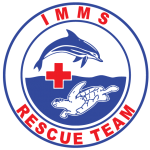Past Projects
Millan Ambert, A., Samuelson, M. M., Pitchford, J. L., & Solangi, M. (2017).
Visually detectable malformations of a bottlenose dolphin (Tursiops truncatus) in the Mississippi Sound
Aquatic Mammals, 43(4), 557-452.
Samuelson, M. M. (2016). Cooperative Foraging
In T. K. Shackelford & V. A. Weekes-Shackelford (Eds.)
The Encyclopedia of Evolutionary Psychological Science.
Springer International Publishing.
DOI: 10.1007/978-3-319-16999-6_3056-
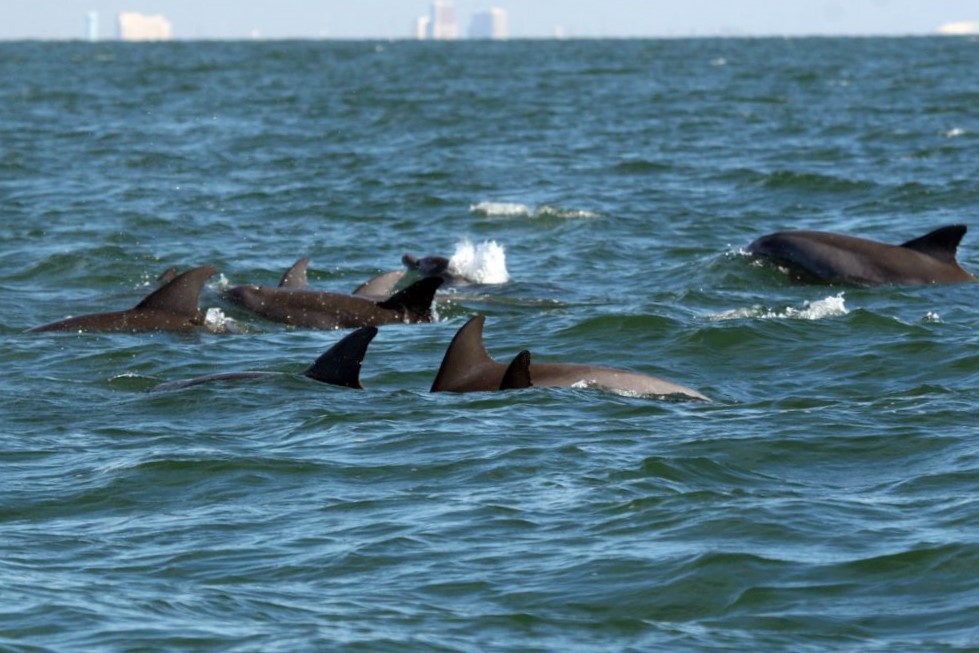
Older Research
Most of the research that has been done on the dolphins inhabiting the waters of Mississippi has been sponsored by IMMS. Some of the projects funded by IMMS in the past have included:
- Aerial and boat assessments of population dynamics of wild bottlenose dolphins in the north central Gulf of Mexico
- Medical studies that have contributed to our understanding of the etiology and treatment of certain diseases of dolphins
- Behavioral studies that have utilized the unique opportunity to examine dolphins in a controlled environment. This research places an emphasis on understanding how the observed behaviors can be applied to better manage populations in the wild.
Current Research
Marine Mammal Research
IMMS has been a leader in captive and wild Atlantic bottlenose dolphin research in the northern Gulf of Mexico ecosystem for almost three decades. Studying marine mammals under controlled conditions make it possible to learn more about their biology and physiology such as how their senses work, how they echolocate, how they dive, and how they interact with one another. Conducting studies in the wild allows researchers to examine population abundance and other ecological parameters such as age structure and seasonal movements. Additionally, IMMS is part of the National Marine Stranding Network. By responding to sick and injured marine mammals, our staff is able to rehabilitate the animals and learn from them at the same time. These efforts have been critical in understanding these iconic species so that they can be properly cared for in public display facilities and managed in their natural environment.
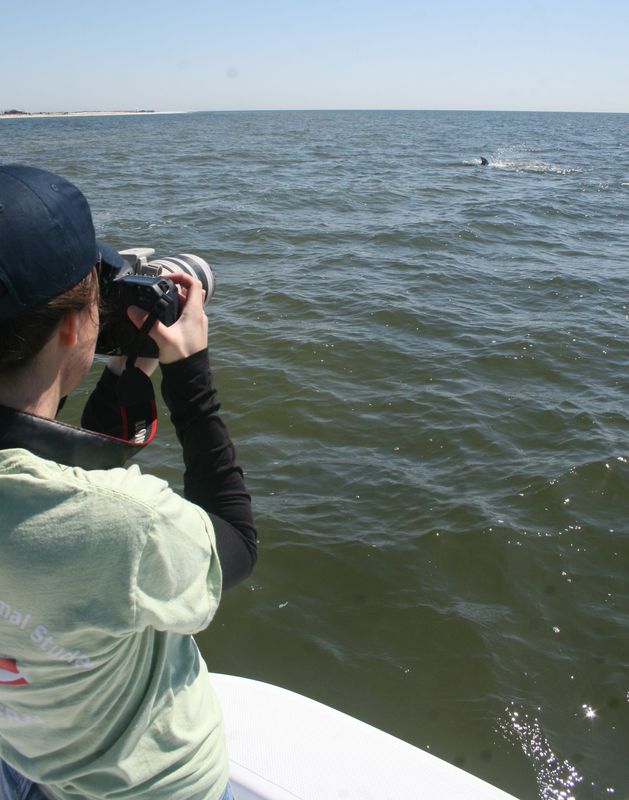
IMMS scientists have two ongoing research projects concerning wild Atlantic bottlenose dolphins in the Mississippi Sound and surrounding waters:
- Consistent transect surveys examining Atlantic bottlenose dolphin population abundance
- Photo-identification study investigating site fidelity and seasonal movements
IMMS scientists are also collaborating with researchers from University of Southern Mississippi studying captive dolphin biology:
- Behavioral enrichment for aging and juvenile captive Atlantic bottlenose dolphins housed together
- Behaviors and acoustics associated with new dolphin introductions
Future plans: IMMS scientists are currently developing more studies to examine the life history, group associations and behavioral acoustics of wild Atlantic bottlenose dolphins. Many stressors such as hurricanes, BP Deepwater Horizon Oil Spill, Gulf of Mexico Dead Zone, and human interactions can all have an effect on the overall population of bottlenose dolphins living within the Mississippi Sound. With data collected in prior years and future data to come, IMMS scientists will be able to better understand the effects that stressors have on the health and population of Atlantic bottlenose dolphins.
Marine Turtle Research
IMMS is also spearheading efforts in marine turtle research, management, and conservation in the northern Gulf of Mexico. This region has been historically understudied in regards to marine turtle ecology, despite five of the seven species of sea turtles inhabiting the Gulf of Mexico and three (Kemp’s ridley, loggerhead, and green sea turtles) being readily found in Mississippi waters. IMMS is an active member of the Sea Turtle Stranding and Salvage Network, and since 2010, IMMS has responded to hundreds of dead sea turtle strandings and live sea turtle incidental captures at fishing piers. The vast majority of these turtles were immature Kemp’s ridley sea turtles, the most critically endangered sea turtle in the world. These efforts have provided IMMS opportunities to understand the biology and ecology of these species. For instance, IMMS data indicate that the Mississippi Sound is a vital developmental habitat for the Kemp’s ridley sea turtle.
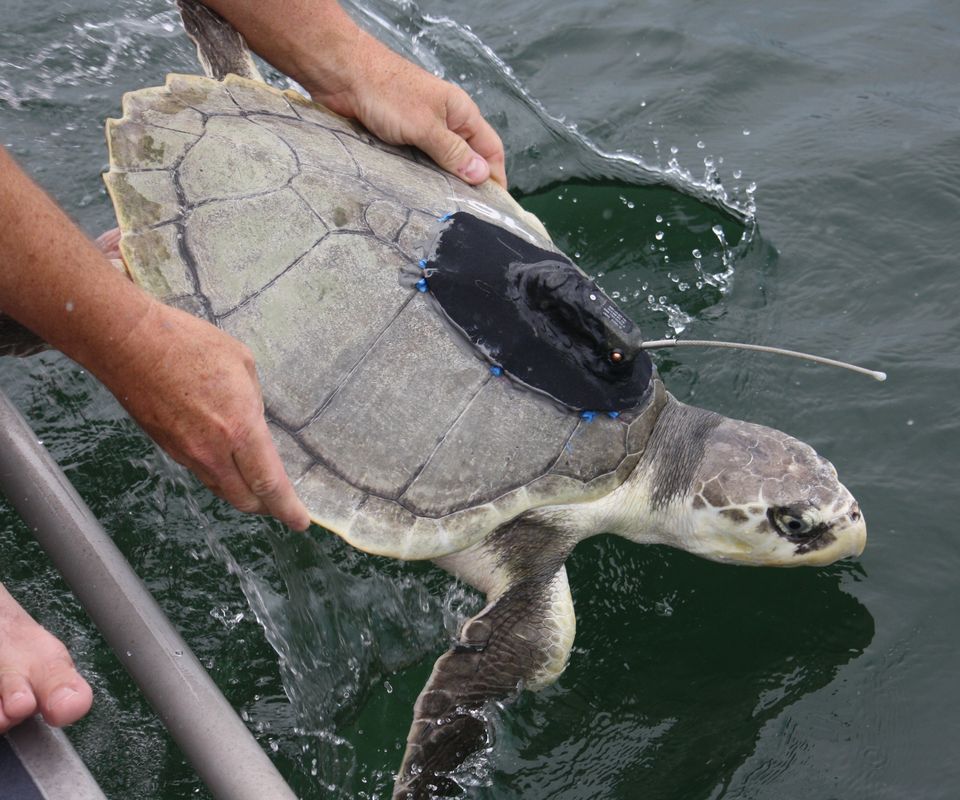
IMMS scientists have several ongoing research projects involving marine turtles in the Mississippi Sound and surrounding waters:
- Satellite telemetry examining movements and migrations of immature Kemp’s ridley, loggerhead, and green sea turtles
- Collaboration with National Marine Fisheries Service investigating how winds and ocean currents can affect the drift of sea turtle carcasses
- Collaboration with US Fish and Wildlife Service and National Park Service analyzing sea turtle nesting ecology on the Mississippi mainland and barrier islands
Publication: Displacement and Site Fidelity of Rehabilitated Immature Kemp’s Ridley Sea Turtles (Lepidochelys kempii) Lyn, et. al. 2012
Future plans: IMMS scientists plan to conduct studies examining population abundance, ecology, and health of marine turtle populations. The effects of anthropogenic stressors, such as the BP Deepwater Horizon Oil Spill and the Gulf of Mexico Dead Zone, on the turtles’ natural habitat will also be studied.
Diamondback Terrapin Research
IMMS is beginning efforts to examine diamondback terrapin ecology and conservation in Mississippi. Diamondback terrapins are the only obligate estuarine turtle in North America inhabiting salt marshes and bays along the Atlantic and Gulf coasts from Cape Cod, Massachusetts, to Corpus Christi, Texas. Terrapins were once abundant throughout their range, but many populations are now threatened due to historical harvesting, habitat degradation, and nest predation. Numerous terrapins also drown in submerged crab traps that are actively fished or abandoned. Finally, many terrapin females are hit by cars as the females venture onto roads as they are attempting to reach nesting habitats.
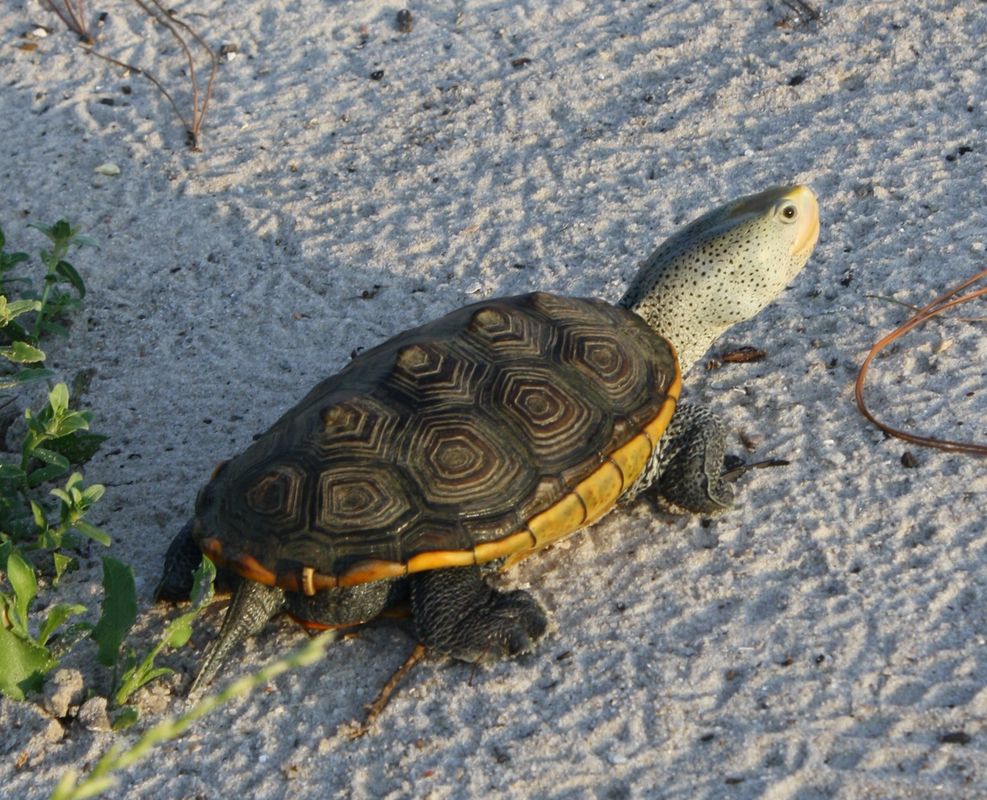
IMMS scientists have two ongoing studies investigating diamondback terrapin ecology:
- Conduct mark-recapture studies in various salt marshes to better understand population abundance
- Conduct consistent depredated nest surveys in various salt marshes to identify important nesting habitats
